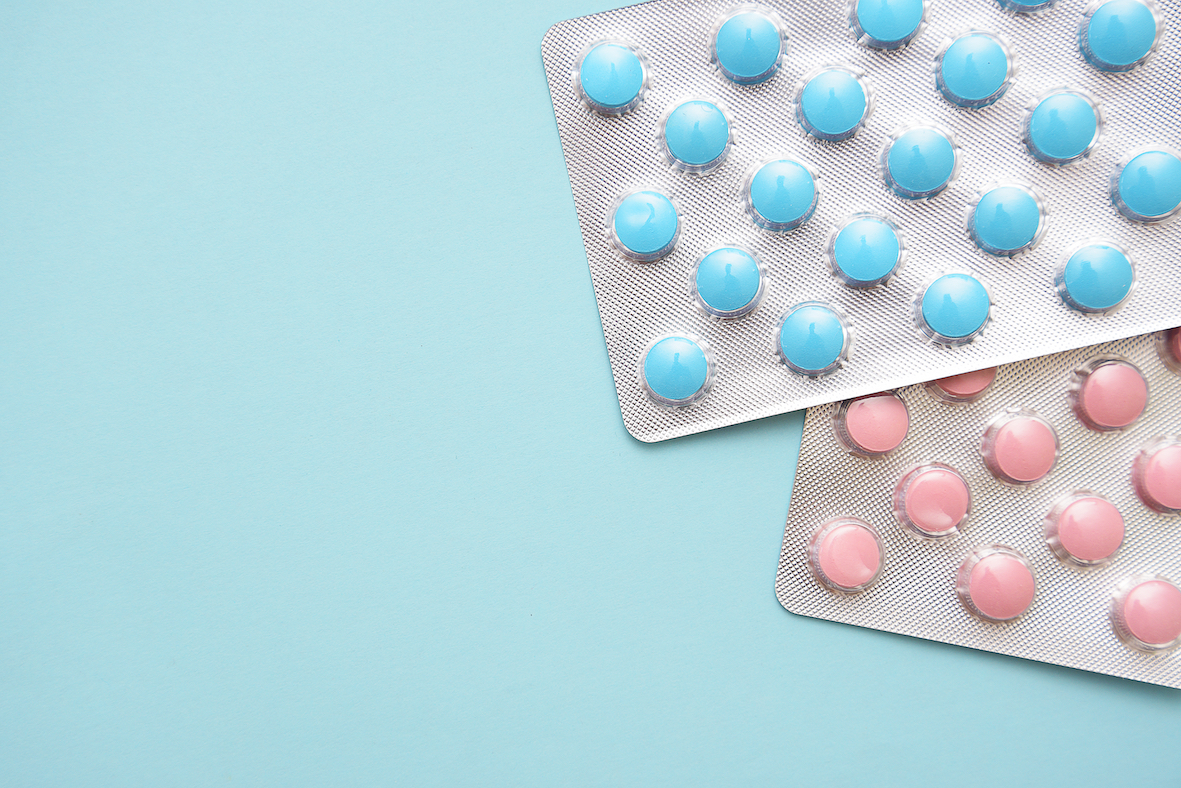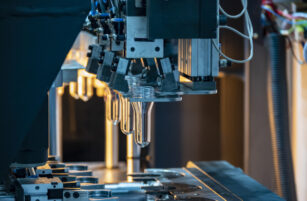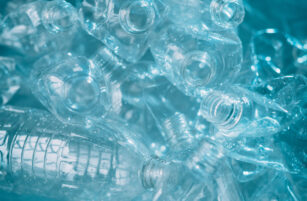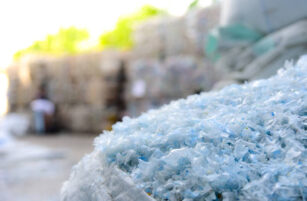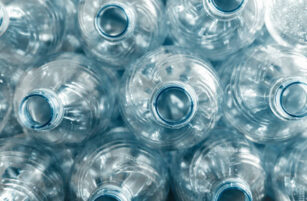
A Quick Recap
In previous reports, we’ve followed the production cycle of aluminium from mined bauxite to important food and beverage products, such as beverage cans and foils. For our first Opinion of 2021, we’re going to focus on the high growth area of thermoformed products that use aluminium.
Blister Packs and Thermoforming
Push-through or peel-open blister packs are produced by three primary methods:
1. Cold Forming
2. Thermoforming
3. Thermo Cold Forming
These all have relevance to the aluminium industry.
In the cold forming method, an aluminium base is stamped into a mould and then elongated, while maintaining the basic shape to produce Cold Form Foil (CFF) blisters. Readers will be familiar with this technology as one of the two main ways the pharmaceutical industry provides tablets.
The other main delivery system is with a plastic blister using the other two methods mentioned. Each has their advantages and disadvantages. Aluminium CFF maintains a complete and important aseptic barrier but is slower to produce because plastic is the ideal material to thermoform and you can’t see the tablets inside, which can cause regulatory problems.
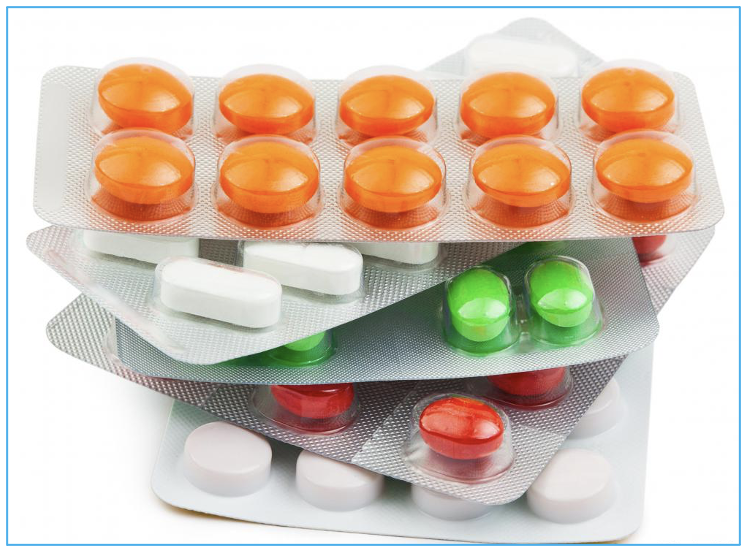
In non-CFF methods, the blister pack will still likely contain aluminium as part of the back panel.
CFF is much easier to recycle but, because of the plastic top and aluminium back panel of other configurations where the product visible, it means these mostly finish up in landfill sites. It’s theoretically possible to separate the multiple parts, but it’s expensive and currently at the experimental stage for the most part.
One program in the UK is the very new partnership (January 2021) between TerraCycle and the French pharmaceutical company, Sanofi, and UK residents will start to see collection boxes for these blister packs for onward recycling at independent pharmacies (for Sanofi products only).
Although blister packs are more associated with the pharmaceutical industry, they have uses in the food packaging industry, for example in products that are used in a similar way to dose medicines such as fish food tablets and chewing gum.
Single Use Packs
These are produced in a similar way using thermoforming, typically as a single serving disposable item such as butter, jam, cream, cheese and coffee. The lids of these are normally made from aluminium foil and the containers from plastics. They are chosen for long life storage and are very suitable for the hotel, restaurant and travel industries.

As the first process of recycling is carried out by the consumer (i.e., separating the aluminium foil lid from the plastic on use), these types of products have a low wastage and reasonably strong environmental profile.
Coffee Capsules and Pods
What happened to all those drip filter coffee machines in hotel rooms? The market for coffee capsules and pods is one of the fastest growing in the global food and beverage sector at around 7% Compound Annual Growth Rate (CAGR).
Already one in three households in the UK have a coffee capsule or pod machine and it’s on the highly desirable list for a present or purchase.
Coffee capsules are the single-serve container made of plastic and an aluminium lid. They typically come in a variety of colours to show the strength or flavouring of the coffee. Pods are pre-packed coffee in an individual paper bag (like a tea bag) and can be recycled but still have two constituent parts: the coffee bag and the outer wrapper, which will often contain an aluminium layer. Pods are also far less likely to require the use of a specific branded coffee making machine. In this article, we’re mostly discussing capsules, because of the role of aluminium in them, but many of the comments also apply to pods.
It’s a controversial area.
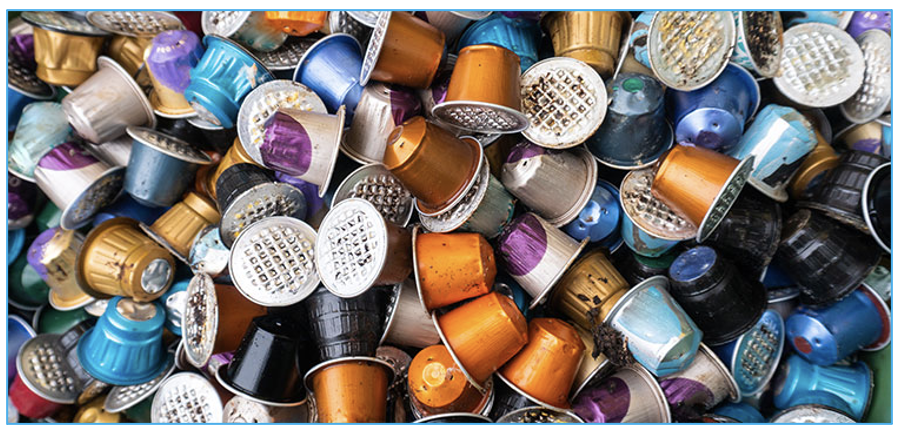
The most famous and earliest pod system is Nespresso (Nestlé), patented in 1976, but now with some patents expired. It uses hermetically sealed aluminium (with silica additive) capsules. Other well-known capsule systems have plastic containers and foil lids such as with Lavazza, Illy, and Keurig. These manufacturers all work hard to make sure that a generic pod will not work in their machines.
The controversy stems from the environmental impact of the different types of systems as well as whether capsules are more environmentally friendly than other methods, such as drip filters or pods.
There are three possible directions worth exploring.
The first is to at least make sure the plastic element is recyclable using high quality polypropylene, making that element acceptable to more recyclers in the future. The second is to let the manufacturer handle the recycling and splitting the constituent parts, and this has proved moderately successful through collection points or other return after use systems. The third possibility is to move to all aluminium pods and go back to the original 1976 concept.
Nespresso, to their credit, has a recycling programme for its aluminium capsules in 44 countries, including six countries where they can be returned via the postal system. In some countries, such as France and Germany, the capsules can even be added into the regular household recyclable waste collection system for later separation (Note: Nescafé Dolce Gusto is plastic-based).
What is less clear is how much of the returned aluminium is actually recycled, rather than used to generate heat, recovered as bottom ash/dross, or even sent to a landfill. Certainly, the added silica (part of the original patents) would make recycling more difficult. All these methods have different costs and environmental balances.
What is clearer is that, in a whole life cycle analysis, coffee capsules perform well compared to traditional drip filter systems and possibly even pods. Filters use about 25% more coffee, and much more energy to grow, harvest, transport, and package the beans – plus the extra energy in heating up the coffee in a much greater volume of water.
One further possibility is the use of bio-based capsules (and the wrappers for the pods) and that would cut out the use of both plastics and aluminium. This development is in its infancy and comes with its own set of problems.
An article in Recycling Waste World UK (2017) and specifically in relation to coffee said:
“I’m sure that those creating biodegradable packaging are very well intentioned, and if you had asked me my opinion a decade ago, I would have said what a marvellous thing it was. However, actually finding a home for all biodegradable packaging presents a number of challenges that make many anaerobic digestion and composting operators nervous about taking them.”
Conclusion
Coffee capsules and blister packs containing aluminium are a fast-growing market and aren’t going to be replaced very easily.

Other Opinions You May Be Interested In…
- Aluminium: The Basics You Need to Know
- Aluminium: A Closer Look at its Carbon Footprint
- Aluminium: The Anatomy of the Can
- Aluminium: From Beverage Factory to Consumer
- Aluminium: New Can Manufacturing Technologies
- Aluminium: Consumer Beverage Trends
- Aluminium: Foil Through the Years
- Aluminium: Food Packaging

